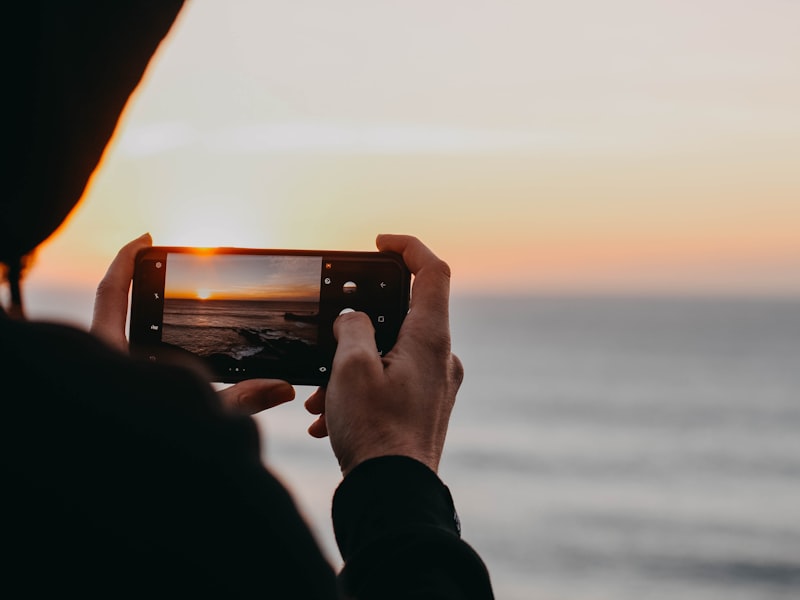In the bright, sun-soaked living room of their Malibu home, Snapchat founder and CEO Evan Spiegel and his supermodel wife Miranda Kerr exchange looks of amusement as they listen to their son, who is two years old, babble with delight on the screen of the tablet the latter is holding.
The screen shows the toddler's great-grandmother wrapped in blue flames and gazing down at her with blue feline eyes. The great-grandmother is seen looking worried when an animated orange cat appears perched upon the head of her great-grandson, and continues to wag its tail sluggishly.
The two relatives haven't been able to meet one another in person since the start of the COVID-19 pandemic, however, as avid users Snapchat's augmented reality lenses they've had plenty of opportunities to laugh together.
Spiegel says that this intergenerational exchange happening in his living room is a testament to the flexibility of the app that Spiegel originally designed as a Stanford student in the year 2011.
When he suggested the idea for a photo-sharing app that would erase shared photos instantly the app was ridiculed by his peers.
"Everyone said, 'That is an awful idea"" he recalls. SEXTING "Not just is there no one who is going to use it, but they also said that but the only people who do would use it for sexting."
Miranda (@mirandakerr) Miranda (@mirandakerr) 9 10th, 2020 at 9:51 AM PST.
Snapchat's 229 million users send an average of four billion snaps per day, a little over 10 years later. Snapchat has become so popular with young people that the term gen Z has become synonymous with the "Snapchat Generation".
But this nickname belies the reality that Snapchat has created new and unique methods of socializing that individuals from all ages and the spectrum of demographics can appreciate.
In the first quarter of 2020, the total daily time spent watching content on Snapchat's Discover feature doubled year-on-year among users who are over 35. Snapchat interactions are unique in that they encourage spontaneity and genuineness, as well as creativity.
"Snapchat is designed to help people stay connected to their friends and family, and that's never been more crucial than now, during this difficult time." - Evan Spiegel
A snap is not an element of a carefully created online persona. It's an opportunity to be silly, outrageous or vulnerable to the people you are affixed to and trust.
This is the thing that gives Spiegel his strength against rivals who copy his features such as ephemeral messaging and lenses that are augmented with reality.
"Snapchat is not just a collection of features. It really has an underlying philosophy that runs directly counter to traditional social media," Spiegel says.
"Since the very DNA of other businesses is about having people compete against each other online to get attention, I think that it will be harder to duplicate the essence of Snapchat. Snapchat is."
Together emotionally
It would be difficult to replicate the recent growth of Snapchat. While businesses across the globe have been sucked into the abyss of the COVID-19 crisis Snap Inc. generated US$462 million (A$714.1 million) of revenue in the first quarter of this year, which is equivalent to an increase of 44 per cent year-on year growth rate.
Spiegel states that while the advertising budgets of many companies were cut by COVID-19, revenue growth rates in the first 2 months of the quarter were high and surpassed our March growth.
Although Snapchat's revenue growth may slow due to the pandemic, Snapchat's social distancing policies allow Snapchat an even bigger role in people's lives.
"Snapchat is about helping users keep in contact with their loved ones and friends, and that's more important than ever during these tough times. We're seeing stay-at-home-orders boost engagement," Spiegel told CNBC.
Snapchat has become a popular destination for brands whose goods can be compatible with social distancing as well as other pandemic-related regulations due to its high level of engagement.
"There are a lot of businesses that can succeed in serving their customers while at home. For instance at-home fitness beauty, gaming and beauty brands. They're focusing on these down-funnel optimizations, and are seeing a lot of successes and increasing their spending," Spiegel says.
By the time social distancing was becoming more commonplace in the latter part of March, communication between Snapchat users was 30 percent higher than in the last week of January and more than 50 percent more in some areas.
"Our team remains inspired and motivated in spite of the challenging circumstances , because our product has never been more important in the lives of people, particularly for helping close family members and friends stay together emotionally while they're physically separated." Spiegel says.
From fun to utility
Snapchat has gone further by partnering with the World Health Organization and the Centers for Disease Control and Prevention in the US to broadcast vital information to its users.
Spiegel states, "Receiving accurate information can be the difference between life or death, and our publishing partner have really risen up to the occasion."
"In the beginning of the crisis, we quickly introduced a variety of Filters and Lenses with safety tips and best practices, which quickly reached hundreds of millions of people around the globe. Snapchatters who are suffering from mental health issues or emotional difficulties, or those who want to learn more about how to help their friends, can now access proactive in-app support called Here For You.
These developments are part of Spiegel's vision of Snapchat becoming an essential utility and not just an entertainment platform. Expanding the potential of augmented reality will play a central part in this.
